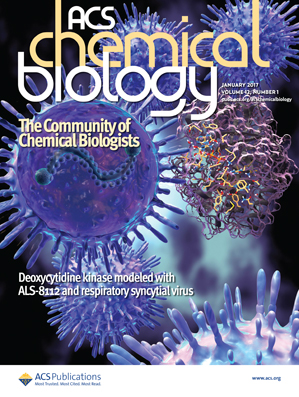KLHL6的破坏助长了B细胞淋巴瘤的致癌抗原受体信号传导
IF 3.5
2区 生物学
Q2 BIOCHEMISTRY & MOLECULAR BIOLOGY
引用次数: 0
摘要
弥漫大B细胞淋巴瘤(DLBCL)中激活致癌B细胞受体(BCR)信号传导的病理机制在很大程度上尚属未知。Kelch样家族成员6(Kelch-like family member 6,KLHL6)编码Cullin-3-RING E3泛素连接酶(CRL)的底物适配器,其靶点尚未明确,在DLBCL中反复发生突变。通过应用高通量蛋白质相互作用组筛选和功能表征,我们发现KLHL6通过靶向其信号亚基CD79A和CD79B来调控BCR。在MCD/C5样活化B细胞DLBCL中,KLHL6生理表达模式的缺失很常见,并且与CD79B水平升高和预后不良有关。KLHL6的BTB结构域突变破坏了其定位和异源二聚体化,并增加了表面BCR水平和信号传导,而Kelch结构域突变体则具有相反的效果。KLHL6突变体的功能障碍超出了近端BCR信号转导,其表型与KLHL6沉默不同。总之,我们的研究结果揭示了KLHL6的复发性突变如何改变BCR信号转导并诱导DLBCL的表型特征。本文章由计算机程序翻译,如有差异,请以英文原文为准。
Disruption of KLHL6 Fuels Oncogenic Antigen Receptor Signaling in B-cell Lymphoma.
Pathomechanisms that activate oncogenic B-cell receptor (BCR) signaling in diffuse large B-cell lymphoma (DLBCL), are largely unknown. Kelch-like family member 6 (KLHL6) encoding a substrate-adapter for Cullin-3-RING E3 ubiquitin-ligase (CRL) with poorly established targets is recurrently mutated in DLBCL. By applying high-throughput protein interactome screens and functional characterization, we discovered that KLHL6 regulates BCR by targeting its signaling subunits CD79A and CD79B. Loss of physiological KLHL6 expression pattern was frequent among the MCD/C5-like activated B-cell DLBCLs and was associated with higher CD79B levels and dismal outcome. Mutations in the BTB domain of KLHL6 disrupted its localization and heterodimerization, and increased surface BCR levels and signaling, whereas Kelch domain mutants had the opposite effect. Malfunctions of KLHL6 mutants extended beyond proximal BCR signaling with distinct phenotypes from KLHL6 silencing. Collectively, our findings uncover how recurrent mutations in KLHL6 alter BCR signaling and induce actionable phenotypic characteristics in DLBCL.
求助全文
通过发布文献求助,成功后即可免费获取论文全文。
去求助
来源期刊

ACS Chemical Biology
生物-生化与分子生物学
CiteScore
7.50
自引率
5.00%
发文量
353
审稿时长
3.3 months
期刊介绍:
ACS Chemical Biology provides an international forum for the rapid communication of research that broadly embraces the interface between chemistry and biology.
The journal also serves as a forum to facilitate the communication between biologists and chemists that will translate into new research opportunities and discoveries. Results will be published in which molecular reasoning has been used to probe questions through in vitro investigations, cell biological methods, or organismic studies.
We welcome mechanistic studies on proteins, nucleic acids, sugars, lipids, and nonbiological polymers. The journal serves a large scientific community, exploring cellular function from both chemical and biological perspectives. It is understood that submitted work is based upon original results and has not been published previously.
 求助内容:
求助内容: 应助结果提醒方式:
应助结果提醒方式:


